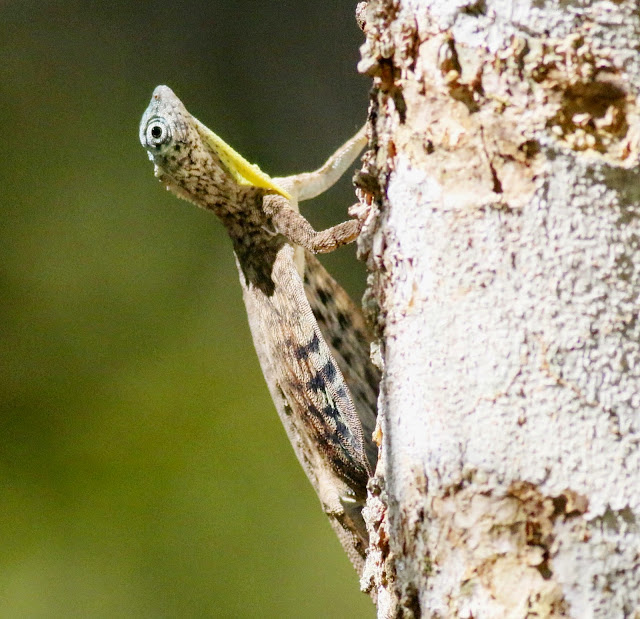The world of academia was once considered as sacred as the mountains of Madinah but nowadays it is hard to trust anyone in the academia. When academia at the top behave like some rogue politicians, deceiving, belittle and sabotaging its own people while quietly emptying the coffers among themselves then the virtues of an institution of a higher education have actually been compromised.

The above photo is not like your garden of Eve nor was it like any common anthropogenic landscapes. It is an original and serene jungle pool where you can soothe your angry soul by having a dip inside. Unfortunately there were lots of mozzies on the trails at the moment so the bath will have to wait but i did sweat a bucket from walking around.
Now back to birding. Here are some of the birds seen inside and around Perdik recently (i.e between end of April and early May 2015).
 |
| Arctic Warbler |
This is certainly an adult bird. The wing bars can be seen here but it is not a distinguishable feature as any experience birders would attest. Aside from the absence of a lateral white line on top of its head and the yellow vent, take note of the little black patch at its lower mandible. This little black patch is more visible with an Arctic as compared to an Eastern-Crowned Warbler (pers obs). Arctic Wabler (Phylloscopus borealis) is a long distance migratory bird and it would be interesting to see whether the bird will returned to this place in its next winter trip. Rapid forest fragmentation due to cultivation will have a profound impact at this location in the near future. That is for sure!
 |
| Ruby-Cheeked Sunbird (male) |
You can see the purple streak on the side of his face which separates it from other similar looking sunbird. Some older versions of field guides have somehow failed to describe/highlight this feature. Same goes with the cuckoo bird below:
This cuckoo flew in silently and stop for a few seconds above my head before flying to the opposite side of the road. Can you guess which cuckoo species it belong to?
 |
| Little Bronze Cuckoo (Female) |
Yup ! its a female Little Bronze Cuckoo. Here you can see a tinge of green hue on her feathers but unfortunately you are not able to see the narrow green orbital eye ring which separates her from the male.
Some old field guides did not show this feature in their drawings. In addition to the above cuckoo, i have also heard the calls from an Indian Cuckoo and as well as a Plaintive Cuckoo nearby.
Perhaps you can see a lil of it here.
 |
| Black-Headed Bulbul |
Nope! i am not telling you anything.....
 |
| Red-Eyed Bulbul |
 |
| Spectacle Bulbul |
 |
| White-Rumped Munia |
This is certainly a swiflet but not sure which subspecies it belongs to. There were not many flying around though.
Not really a decent photo but glad to know that it is still around. The last time i saw this male Black-Naped Monarch at this place was many years back. It was seen incubating at its nest which was quite near to the trail. Hopefully the female is still around too.
 |
| Plain Sunbird (female) |
Large Woodshrike or Black-winged Flycatcher Shrike?
It is surely a Large Woodshrike!
The sound of fruits dropping from the trees led me to these pigeons. There were two groups and i think the above green pigeons were Pink-Necked Green Pigeon.
But not this one ! From its maroon colored mantle and under tail i strongly believe that this is a Little Green Pigeon.
Also saw some reptiles:
A common cicak (Draco sumatranus - male) and skink.
Most of the time the highlight of any bird trips were the sighting of a special bird like a raptor. Here is a juvenile Changeable Hawk Eagle.
#like wearing a fluffy legging pants.
 |
| Changeable Hawk Eagle (juvenile) |
This eagle had initially perched quite low inside some dense foliage. I must have flush it out and it flew up to a higher branch. It was quite alert as it flew off as soon as i tried to inch my way closer. The feathers look grayish under a shade but once in the open and in direct contact of sunlight the feathers look brownish in color. An amazing fact and natural phenomenon!



















2 comments:
Stunning captures!
Thanks.
Post a Comment